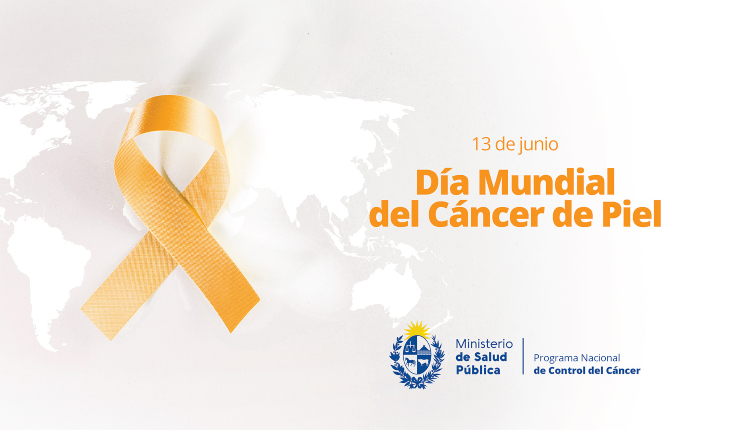On June 13, “World Skin Cancer Day” is celebrated, with the aim of raising awareness, continuing to promote prevention and educating the population about the importance of adopting good habits to avoid this disease, which is considered one of the the most common types of cancer throughout the world and in our country.
There are three main types of skin cancer, with squamous cell and basal cell cancer being the most common. These are also called non-melanoma skin cancer; in most cases they are detected in early stages and are cured only by surgical intervention in which the affected tissue is removed.
The third type of skin cancer called “melanoma” is the most aggressive. It has the ability to spread and metastasize to other parts of the body. If it can be detected in early stages of development, it can also be cured.
In our country, an annual average of approximately 3,200 new cases are diagnosed in both sexes, the most frequent being basal cell carcinomas, followed by squamous cell carcinomas (between the two they reach figures of approximately 2,900) and melanoma appears in third place with 170 new cases. per year (National Cancer Registry 2014-2018).
In terms of mortality, an annual average of approximately 145 people (both sexes) die, with melanoma being the cause of the most deaths with an annual average of 90 people dying (National Cancer Registry 2014-2018).
Therefore, almost 3 people per week die from skin cancer.
What should we be on the lookout for?
A change in the skin is the most common sign. These changes can be a new lesion that has appeared on the skin, a sore that does not heal, or a change in a mole. Not all skin cancers look the same.
Although skin cancer can occur anywhere on the body, it is more common in areas most exposed to sunlight such as the face, neck, hands and arms, since sun exposure is one of the main factors. risky. The lighter skin type (phototype), the immune nature of the person and genetic factors are also determining elements for the risk of developing melanoma.
In the case of melanoma, remember the ABCDE rule:
- Asymmetry, is my mole asymmetrical? (rare non-uniform shape)
- Edge does it have jagged edges? (shifting, poorly defined borders)
- Color do you have several colors?
- Diameter is it more than 6 mm?
- Evolution, did its appearance change over time? do you find it weird? Is it itchy, bleeding, non-healing or crusty?
Examine your moles and spots!
Check your skin. You only need a mirror and good light to detect a suspicious mole. It is important to examine all the skin: do not forget the palms, soles, ears and scalp.
The main risk factor for skin cancer is exposure to ultraviolet radiation (UV rays) from the sun, without protection or care and from other sources, such as tanning beds.
Protect yourself against sun damage from UV rays: this damage is cumulative. The skin has memory. There is no such thing as a safe tan, as tanning is skin damage caused by the sun.
When exposing yourself to the sun, throughout the year and with greater care in summer, keep in mind:
- Enjoy in the shade, avoiding direct sun between 10 am and 4 pm (since we receive more radiation at that time).
- Protect yourself with a hat or cap; dark colored clothes such as black, blue and red (which reject UV rays) preferably long-sleeved and sunglasses with a certified UV filter.
- Put on SPF 30 or higher sunscreen, use on dry skin 30 minutes before sun exposure.
- You should replace it every 2-3 hours, when you get out of the water, after doing outdoor sports or sweating.
- Make sure – before you start enjoying the outdoors – that your family and friends are protected from the sun. – Take care of children, never expose children under one year of age directly to the sun.
- Take care on cloudy and windy days. UV radiation passes through clouds and water, and affects us throughout the year.
- Avoid tanning beds. Self-tanners are allowed.
- Carrying out clinical controls with dermatologists who examine the skin is also an essential pillar in the prevention of skin cancer.
If we find it early, at an early stage, skin cancer can be operated on and can be cured
If you find a new lesion on the skin or an existing one changes in size, shape, color or volume, it is important to consult a dermatology specialist.
If you have many moles, family or personal history of skin cancer, consult your dermatologist periodically.
Although lighter-skinned people – who turn red when exposed to the sun – have a higher risk of skin cancer, anyone can develop it.
















